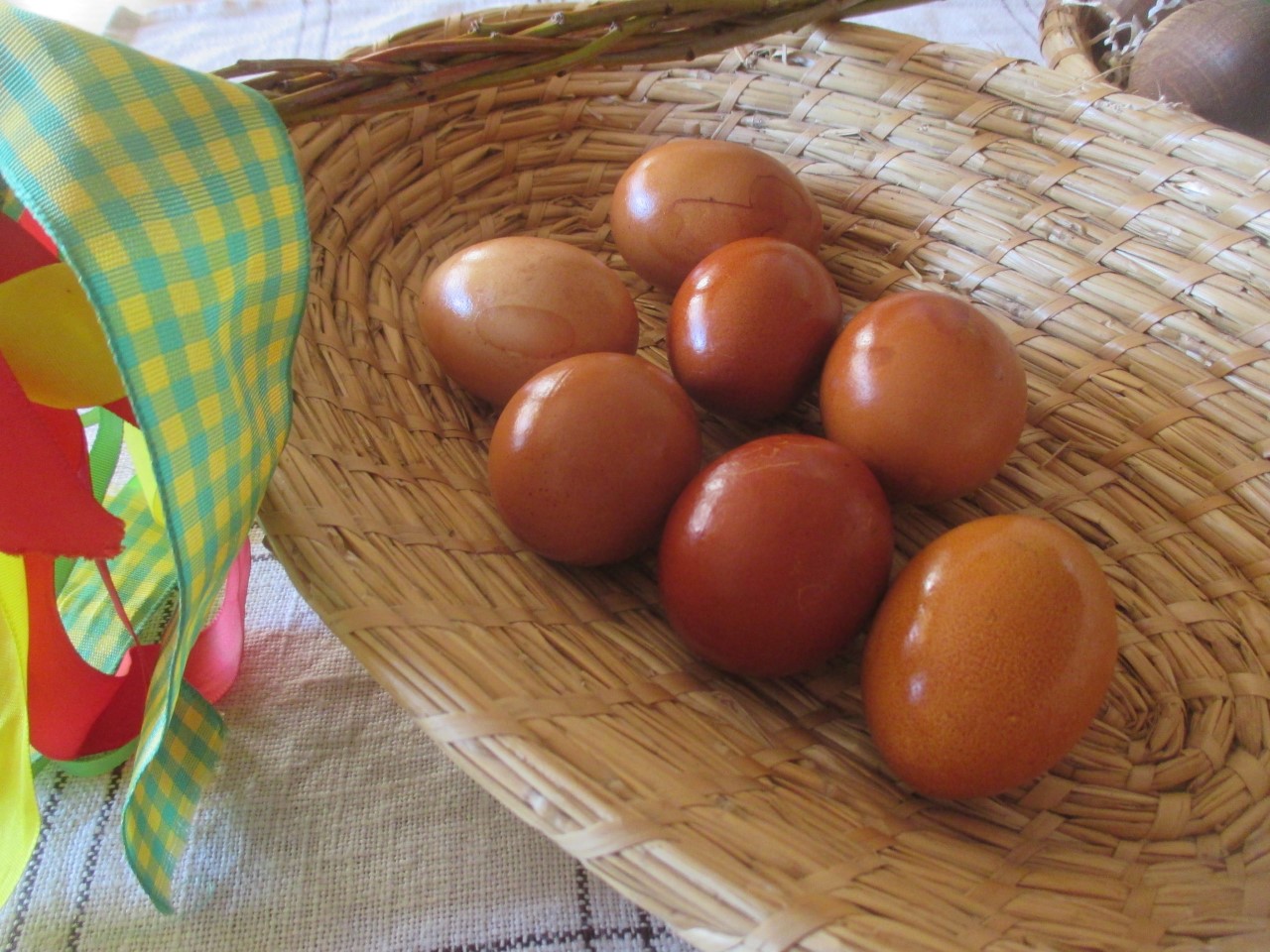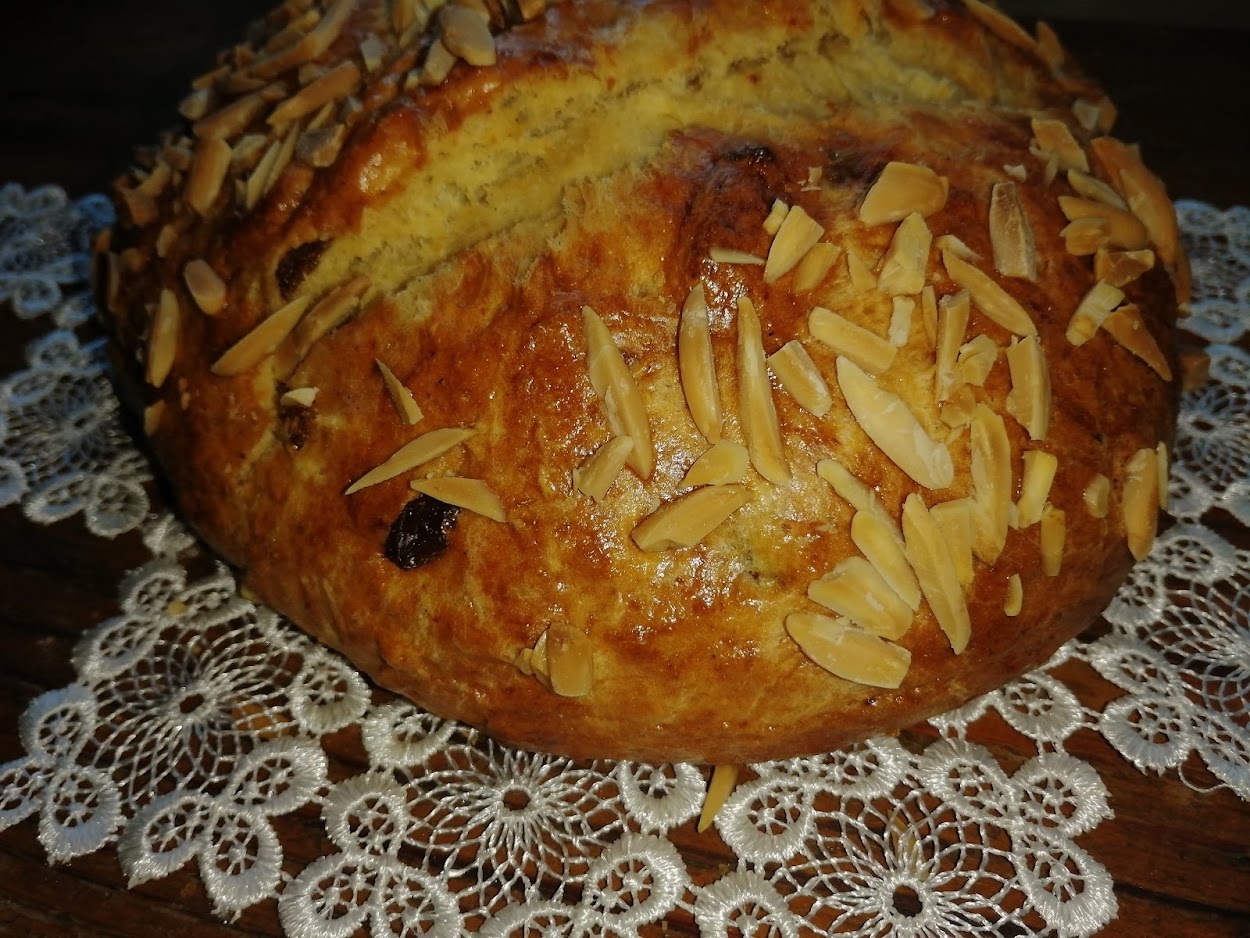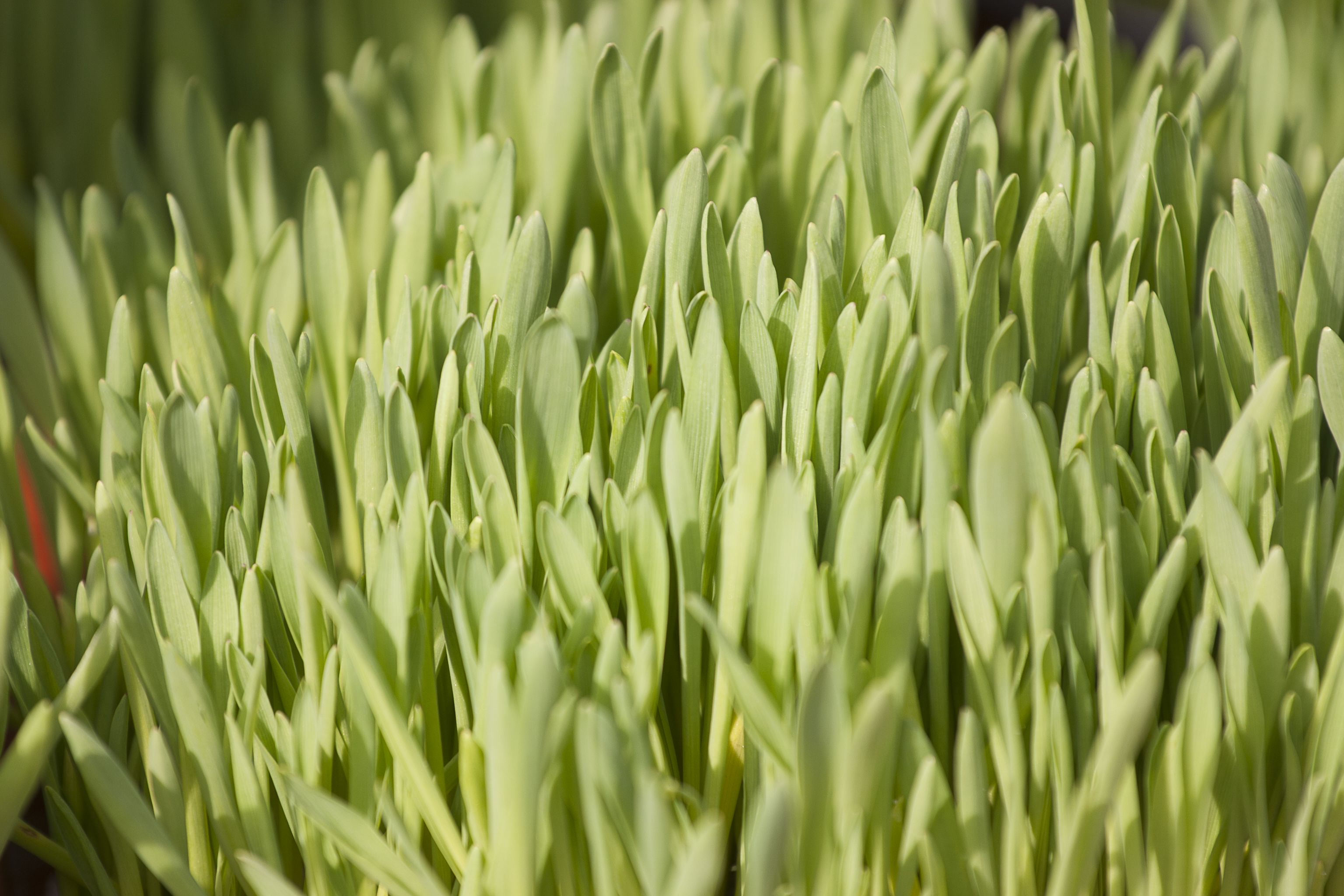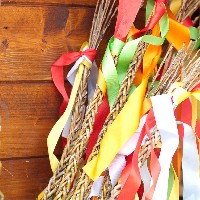Breadcrumbs navigation
Czech Easter Symbols and Customs
Easter markets, carolers, church services and a wealth of cultural events. Read on to find out how Easter is traditionally celebrated in the Czech Republic.
Easter, like Christmas, has always involved a plethora of pagan and Christian customs, sometimes completely intertwined. Mostly, however, the Easter customs are based on the essence of peasant life in the rural countryside - it was the festival of spring, when nature was reawakening to life, and various ceremonies were needed to ensure a good harvest and success in the forthcoming agricultural year - making it a folk Easter. One can also distinguish between Christian and bourgeois Easter. The Czech pomlázka, a sort of trick-or-treating with a willow whip, remained essentially untouched by the Christian Easter.
The most famous customs, of course, are the colouring of eggs and braiding of the pomlázka, a whip of young willow branches - let’s hope these customs never disappear from our country.
An almost forgotten custom is the pouring of ornaments on the doorstep using a cup or pot with sand or water, and decorating the windows with floral patterns using cut soap - this is how the gateways and doorsteps of country houses were decorated with waves and spirals at Easter and Whitsun holidays, or at harvest festivals and kermesse.
Lamb and bunny
To this day, we roast a lamb, which signifies the renewal of life and its victory over death and symbolizes the memory of Christ. When John the Baptist saw Christ, he cried out: “Behold the Lamb of God, who takes away the sins of the world!” Christ acts as the redeemer of sins so that people may obtain forgiveness and salvation.
However, it is difficult to discern from historical sources whether it was a meat or pastry. Most likely, both the roast and the sponge cake were eaten. In the case of meat, this is documented by the ritual of “casting spells with lamb’s bones”. Today, the lamb is made of sweet dough and decorated with a bow once finished.
The Easter bunny, called ostrházi (originating from the German Osterhase) and came to us in the early 20th century. It is a secret gift-giver who hides Easter presents for children - most often eggs. This custom is not firmly rooted in our country, and merely commemorates the gift of the fox on the first or fourth Sunday of Lent - Fox Sunday. The bunny “never sleeps” because it has no eyelids - so it can give presents to children. Naturally, the bunny is also a symbol of fertility, life and happiness and is associated with Egyptian and Aztec mythology. The Easter bunny even can be found in the Bible, where it symbolized everything poor, modest, humble. It used to be depicted as a white hare at the feet of the Virgin Mary - a symbol of purity over carnal temptation.
Easter eggs
Easter eggs are magical objects of ancient origin. They feature not only in our country, but all across Europe. As a symbol of life, fertility and growth, they were attributed supernatural powers, which were increased by colouring them or adding ornamentation. The colour red probably played a very important role, as it is the colour of blood - the colour of life. The ornament also had a symbolic meaning. Some of the motifs are still called “znamena” (signs) in Slovácko - perhaps they were meant to convey contact with ancestors and mysterious natural forces. Decorated eggs were used not only in spring ceremonies, but also at births, weddings and funerals. Since the cult meaning was derived not from gifting but rather from consuming their content, eggs were decorated boiled from time immemorial.
The habit of eating eggs is seemingly related to the Great Fast, during which not even eggs could be consumed, so people waited impatiently for the fast to end. The old custom of giving an Easter egg probably dates back to ancient Egypt. The custom of decorating Easter eggs likely evolved in conjunction with folk tradition, and varies greatly from region to region, as do the names - e.g., magpies or shrews. Kraslice is said to be an East Bohemian word meaning red Easter egg. The colour red was called “beautiful” and Easter eggs used to be painted mainly in red. The custom of decorating Easter eggs dates back to the second half of the 19th century. A blown out, undecorated egg is called a výdumek, elsewhere a poucho.
Many techniques were used to decorate the eggs - wax-resist (batik), decorating with strips of fabric, wax embossing, scratching, decorating with straw, metal or other materials. In our country, the best-preserved folk technique is wrapping the eggs in gauze. First, spring flowers or leaves are attached to the egg, then the egg is wrapped with gauze, tied tightly with string or thread and boiled in a decoction of onion skins. However, this applies to boiled eggs, not blown-out kraslice eggs.
Various decoctions were formerly used to dye eggs - saffron (yellow), lime blossom or caraway (light yellow), nettle root (lemon yellow), onion skins (orange to brown), beetroot (pink), red cabbage (red), tea (light brown), coffee (dark brown), spinach or young rye (green), alder bark or pine cones (blue).

Pomlázka (Easter whip)
(quoted from Otto’s educational dictionary): “...It is deemed an old and widespread Easter custom, in which young people of both sexes whip each other with switches woven of willow branches, often decorated with colourful ribbons and tassels. The switch used in this process is also called a pomlázka, as is the customary Easter gift given while whipping - painted Easter eggs. It is most likely a symbolic custom and refers to the rejuvenation of nature in spring, as the word pomlázka (the root word in Czech being mlad- or youth) itself seems to suggest. The whipping symbolically transfers the rejuvenating power of nature to the living being. This explains why girls in particular are whipped, to keep them fresh, healthy and cheerful; old maids, on the other hand, to make them more youthful and happy; and finally cattle to keep them healthy and “rejuvenated”. In some regions, the pomlázka is called a mrskačka, šlehačka or šmerkust - šmirgrust (from the German Schmackostern, which translates roughly into Easter smacking). A similar meaning is ascribed to oblévačka, i.e., dousing with cold water.
The pomlázka is an essential part of Czech Easter, yet according to reports from the late 19th century, there are places in southwestern and southern Bohemia where the pomlázka was not used for what could be called “trick-or-treating” - children would ask for red eggs without whipping. Those in the Budějovice area recall Easter trick-or-treating with “rams” - strikingly tall bundles of reeds consecrated on Palm Sunday. In the Chodsko region, the tradition bears a different name (dynovat), but also involves whipping with braided switches. It is apparent that use of the pomlázka varied greatly from region to region, as did the names for the device: houdovačka, hodovačka, pomihod, pamihod, pomrhod, koleda, mrskut, dynovačka, binovačka (vino - bino - twisted from vines), mrskačka, mrkanda, mrskut, šlehačka, tatar, kyčkovanka, sekačka, švihačka, šibačka, šibota, metla, korbáč, karabáč, kyčka, kančúch, roučačka, čugár, žila... to name a few.
Mazanec (Easter sweet bread)
A symbol of the sun, it is made on the Second Sunday of Easter from the same dough as the traditional Christmas bread (vánočka). However, in the past it was a savoury pastry - “Easter sweet bread” - made with grated cheese and more eggs (a yellow colour was desirable). The sweet version of this ceremonial pastry retains its original round shape and the sign of the cross. In other parts of our country, the unsweetened mazanec bread was called: baba, babůvka, plecovník, šoldr, svěceník.

Judas cakes
A pastry made of white flour and honey in the shape of a cylinder, symbolizing the rope on which Judas hanged himself - according to the Christian interpretation. A more prosaic folk interpretation says that the housewives felt sorry for the leftover dough and baked small figures and animals for the children’s pleasure.
Sowing grain
Symbolizes the beginning of agricultural labour – usually, grass or some grain is sown in a flat bowl of soil, allowed to sprout and decorated with Easter eggs.



